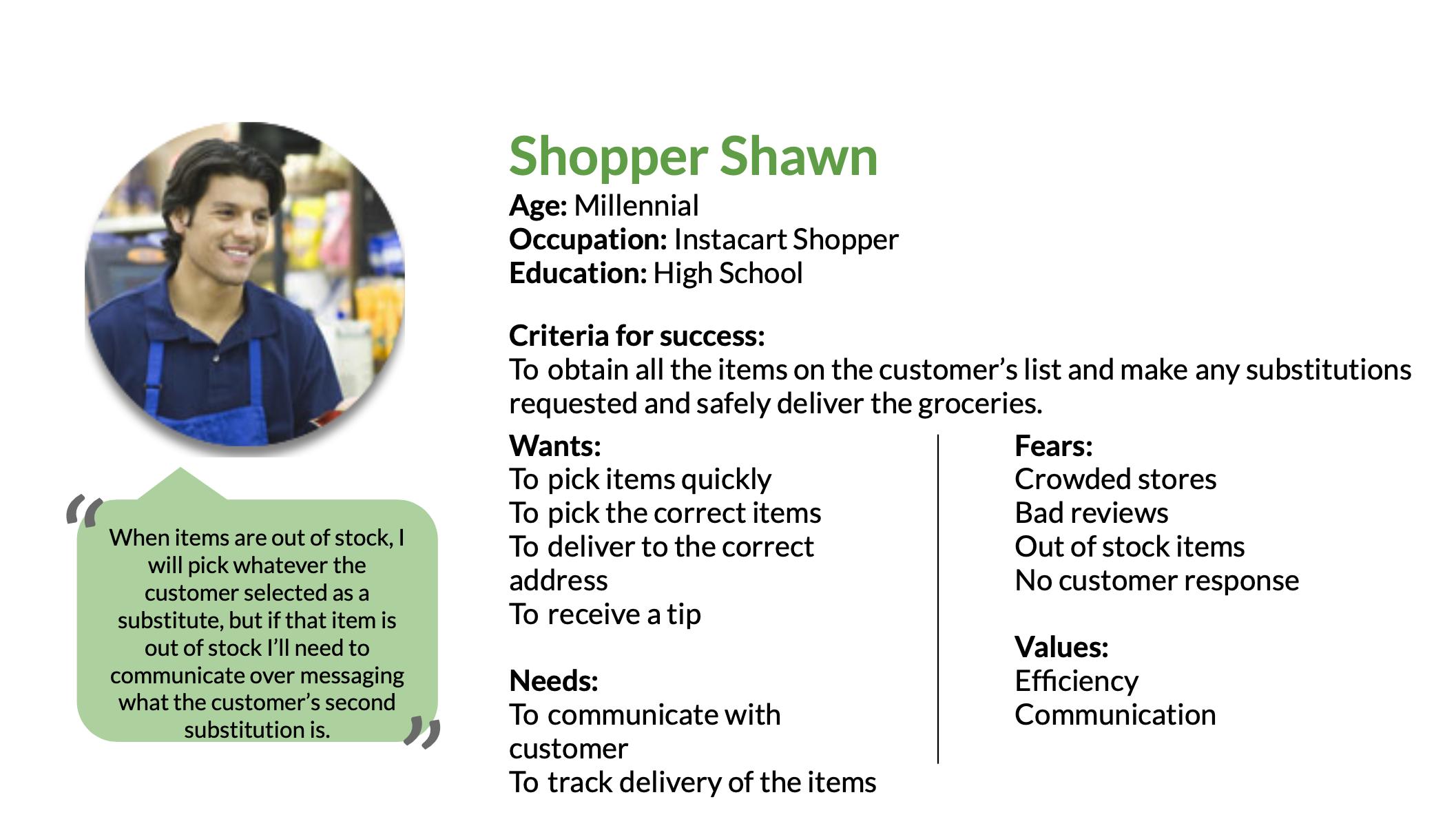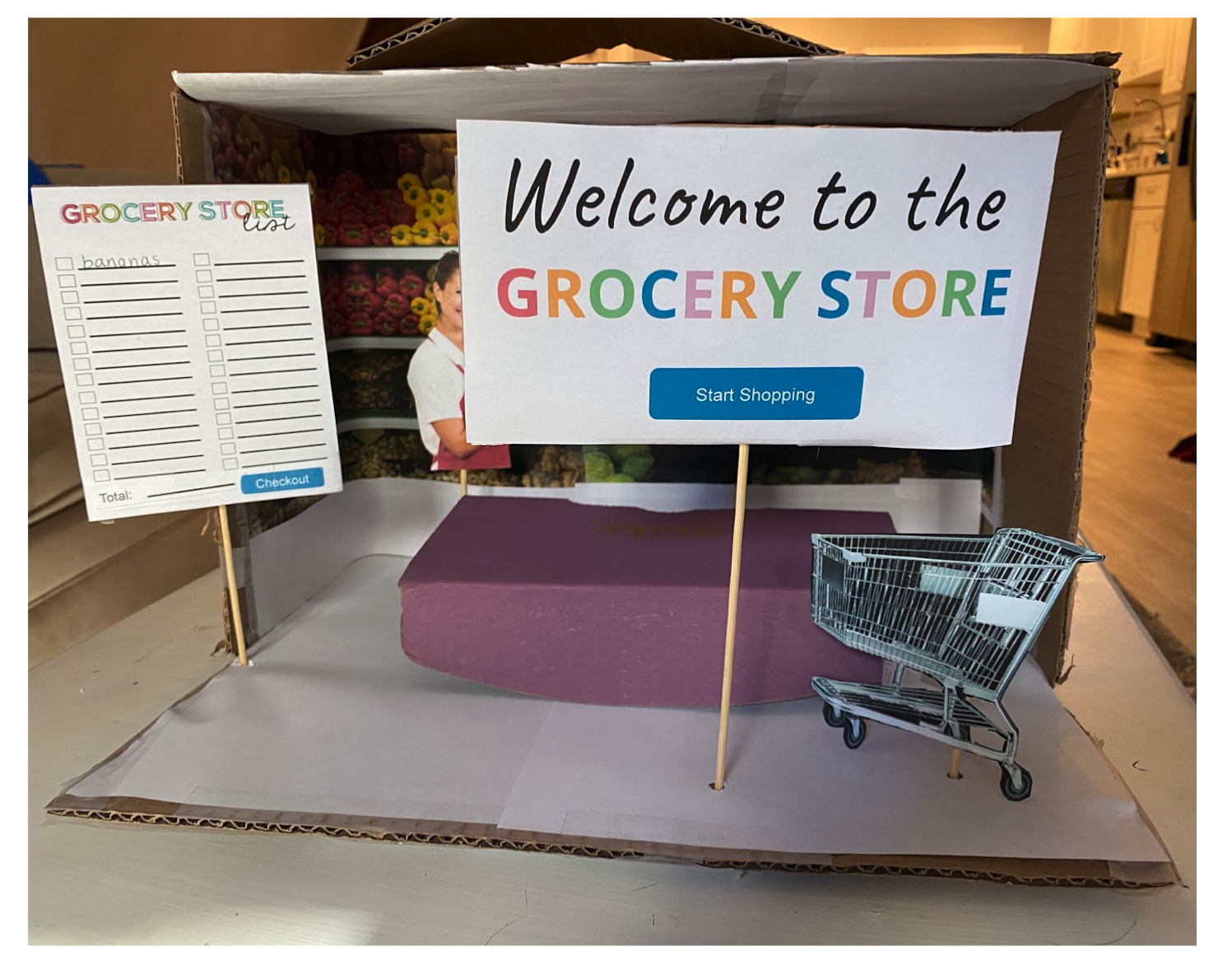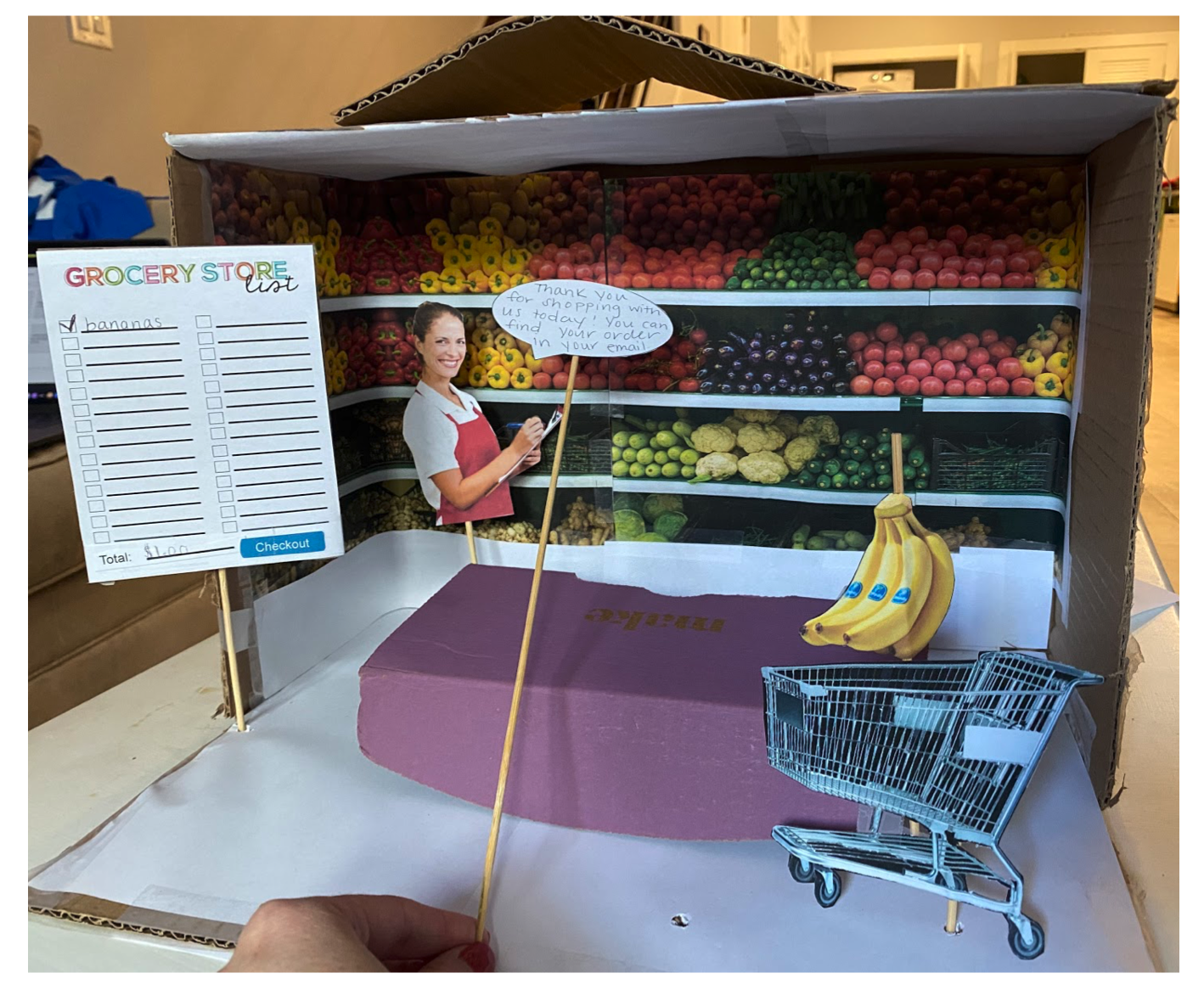Grocery shopping Project
Overview: This project relates to learning about concepts related to VR & AR. The class was divided into the groups of two to work on their selected projects for the VR.
Team: Me and Erin King; Both contributed equally to the project
Problem: To improve grocery shopping experience amid COVID-19
Duration: 6 months
Research - Primary & Secondary
Soon after selecting the problem space we had tp come up with research plan. So, we started with survey, to narrow on the problem space. There are various angles to the problem. topmost being that it can be online or inshore grocery experience, both will ave different expectation and current experience score. To understand it further, we created 2 surveys one being for inshore shopper and her being for online grocery store experience . Me and Erin both came you bunch of questions and brainstormed on which one should be included in the survey. Side by side we also looked if there were other solutions available in the market for the same or with slightly different purpose.
After the survey results were analyzed, were suppose to prepare the questions for the interview. Before defining the questions for the interview, we pinpointed our interview goals. to make sure we were asking the right questions.
Our defined interview goals are as follows:
Recognize the relationship a user has with grocery shopping
Understand a user’s typical shopping trip
Empathize with how COVID has affected their shopping
Define the problem areas associated with grocery shopping
Learn how users are currently navigating problems associated to grocery shopping
Record the elements of grocery shopping users like
Synthesizing
Rose Bud Thorn: It is a tool used to analyze the findings. Here we used it to analysis the findings of interviews. This exercise was done through Figma. We sagrated the key findings into 3 sated categories of Rose Bud Thorn. Also we used 4 colors to segregate the insights from online to store experience. We talked through all the stick notes, to clear Amy doubt we had. It helped me to understand the user and their pinpoints and it also gave me the opportunity to know how those pinpoints can be converted into the opportunities. This exercise gave us insights like user enjoyed grocery shopping and it can sometimes used as social activity. But user also hates long lines etc.
Rose Bud Thorn
Journey Mapping: It is a method to detect the process which a user follows to complete his task, visually. This exercise was also done through Figma, since we learning virtually. This was one of best method applied to solving for grocery problem because it helped in understanding what are the benefits and problems at each stage of the where in the process actually a problem is. Also they were very specific to the task.
Mind Mapping: It is a method helpful to organize information visually. It is helpful when you have lots of information and insights from the interview which you wants to fit on one canvas. So, what we did here was answered the 5Ws and 1Hs.
Journey Map
Mind map
Analysis


Defined the user goals, needs and challenges
Goal - To have groceries for a week
Need - Make a list, go to store and shop or order online.
Challenges - Crowded stores, picking out produce, and long lines
Personas: On the other hand building persona was helpful to bring together all the insights that we collected from research. Also, it was easy to refer to persona when we were thinking about ideas for our prototype.
Prototype
How might we statements: We came up with 3 HMV statements. As we were learning remotely, we used Google Jamboard for collaboration while using Google Meet for class discussion and virtual learning. Constructing a HMW statement is always a good idea because it helps to focus on a specific area that can be worked upon. For this project the HMW statements were:
HMW statements


Cardboard Prototype: Conceptualizing for VR can be easy, when it is done with paper, cardboard, clay or any physical object that can be reused to communicate once idea. So we started paper and moved to cardboard.
Reflection
I was eager to work on a virtual reality project. Because VR/AR technology has been very appropriate for creating design solutions for training professions and sharing knowledge in medical fields. So, to learn and apply the skills needed for designing for VR/AR I chose grocery problem space and designed the solution for the same.
I picked up to solve the grocery store experience during the pandemic because grocery shopping was at its peak due to lockdown. Equally, there was discomfort while shopping in the store. It was because people wanted to prevent themselves from COVID and also buying the necessities for survival like food and cleaning products. Since it was a topic of concern, this topic was chosen.
Besides grocery shopping experience for virtual reality is my first project for VR experience. I did not know how the 3d space would be conceptualized. Also, I had to collaborate remotely as everything else was also virtual. The challenges I faced in the projects were coming up with the prototype.
Thinking, researching, and reading about the same gave me the idea for how I may design for it. We started with a pencil and paper. Made some rough sketches on how the grocery store can look. Then we thought of building the prototype of a scrap box. As we were in the process of designing the prototype. The storyboarding of the entire application helped me in giving insight into how my project would look in the final.
Finally, it was fun to conceptualize the 3d space, starting by using pen and paper then taking it to Adobe XD. If I had time, I would have done user testing on the prototype to improve the experience and design the interaction better by improving visuals, language, and function.




